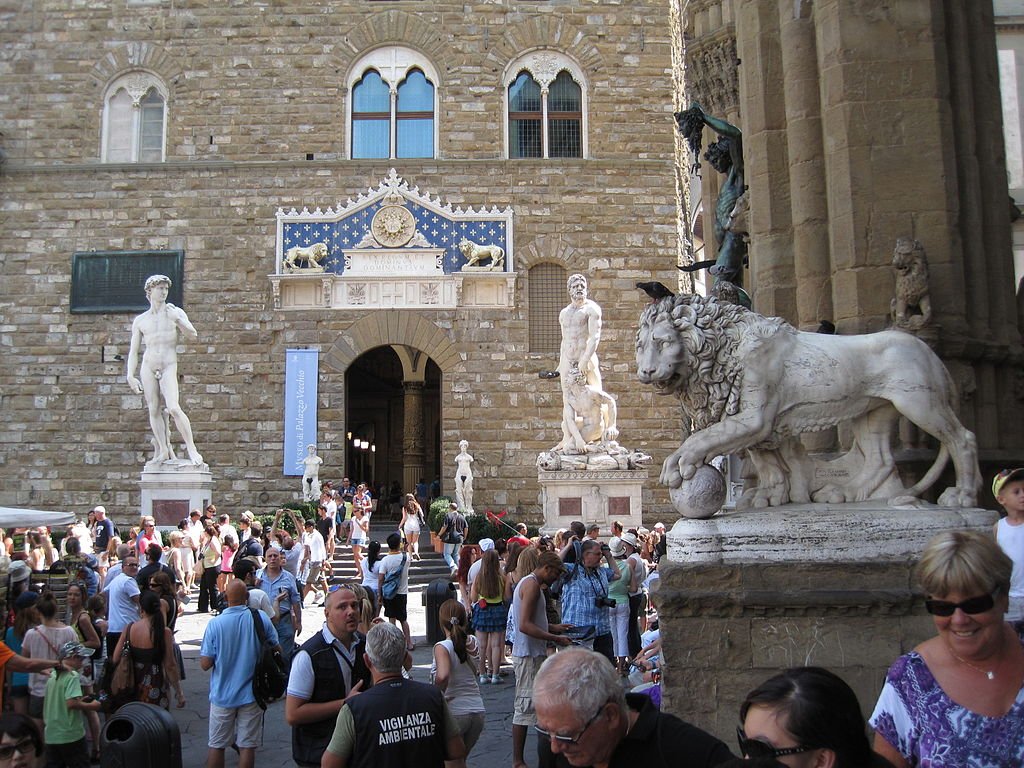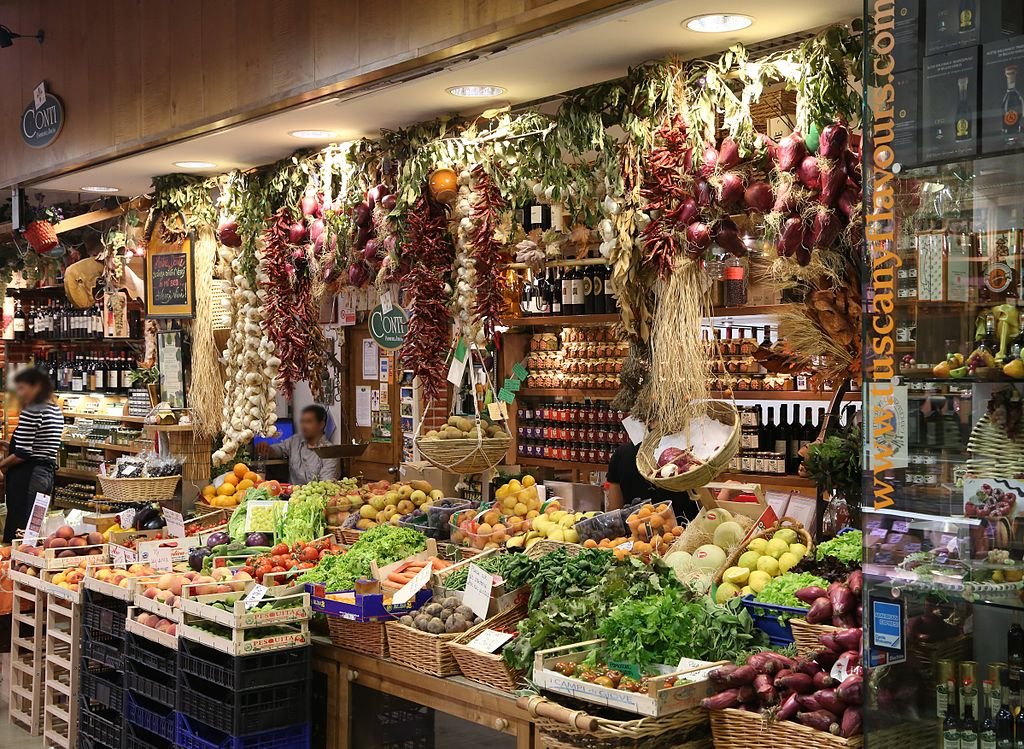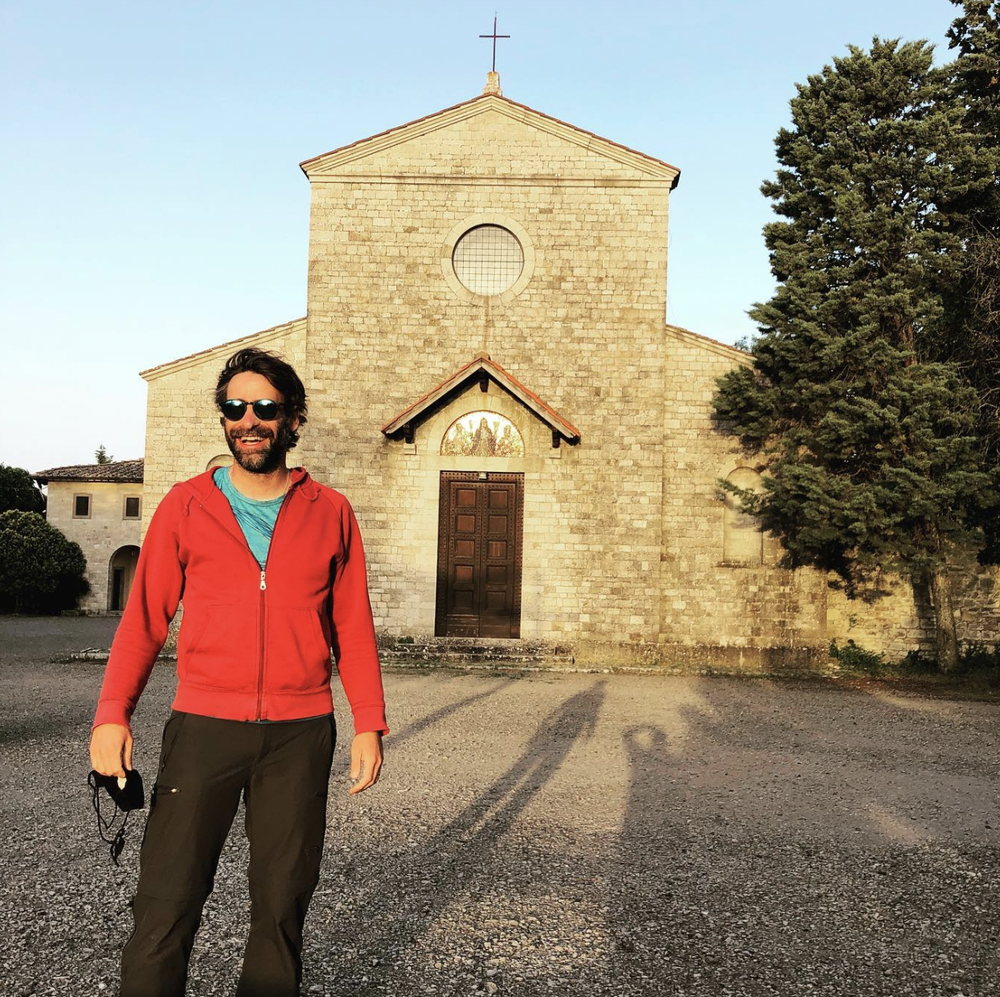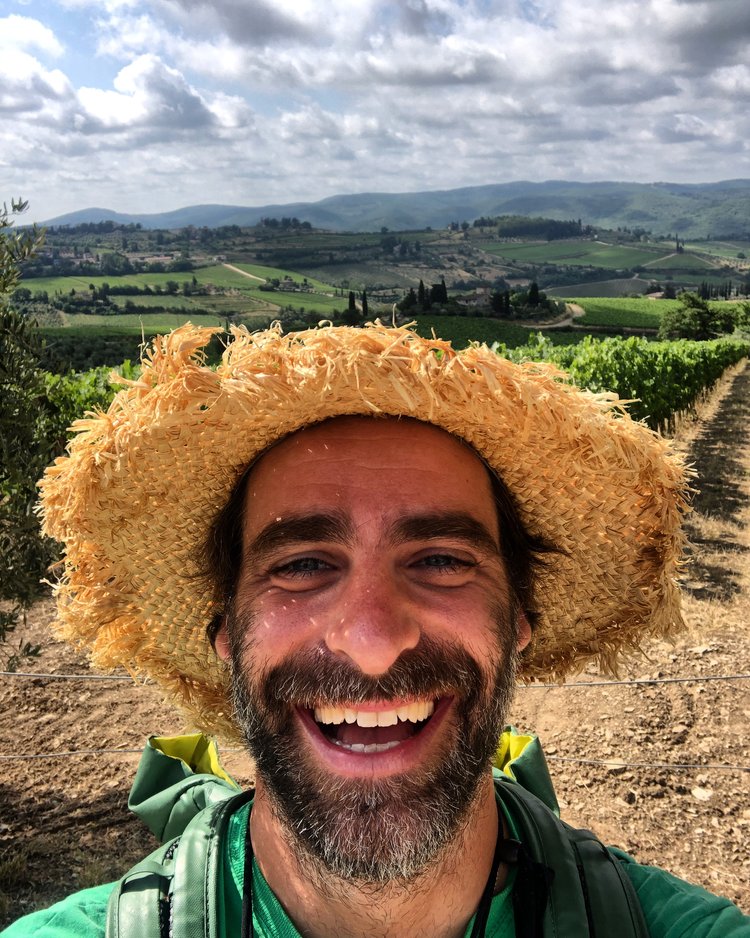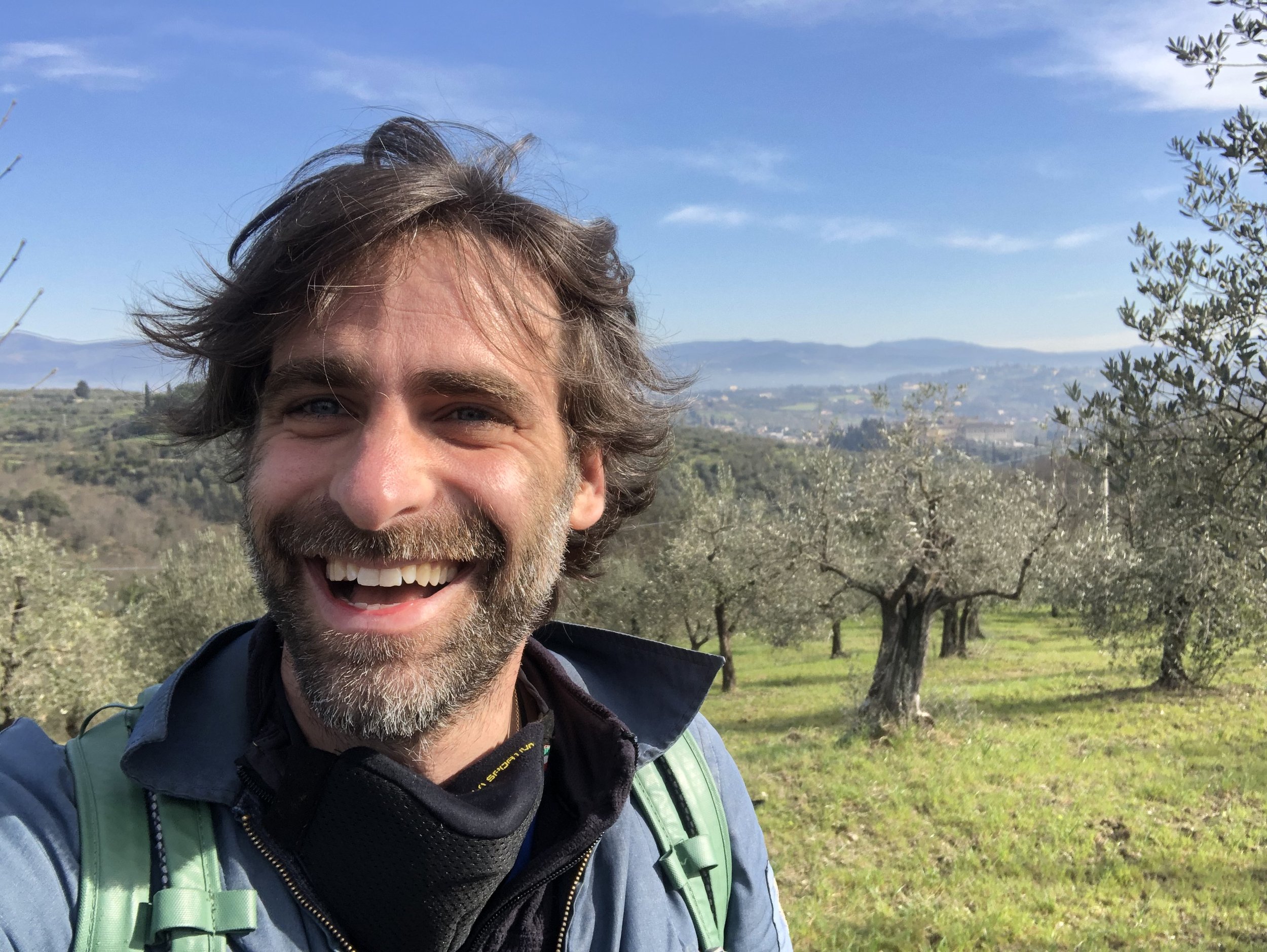What to See and Do in Florence - Italy’s Renaissance Masterpiece
Affiliate disclosure: some of the links in this article are affiliate links. If you book using one of them, we’ll earn a small commission. All of our info is free to read and free of ads, so we appreciate it!
Florence is Italy’s Renaissance masterpiece and it remains home to some of Western Civilization’s finest art and architecture.
Once one of Europe’s most powerful city-states, it was ruled for centuries by the Medici family, who not only controlled Florence, but wielded power over all of Italy and much of Europe by crowning various sons to the papacy.
A morally dubious family, nonetheless, their patronage of the arts led artists, artisans, and great thinkers to flock here, making the city a veritable treasure trove of artistic beauty.
Two of Italy’s best museums, the Uffizi and Accademia, are here, and the many gorgeous churches and palaces contain works by Italy’s most renowned artists.
You could be dropped down in central Florence and with no particular plan in mind, a totally aimless wander would still be a visual delight. Masterpieces are literally around every corner.
Before I get into what to see and do, I think it’s important to note that the city is definitely over-touristed and perpetually mobbed with tourists. That doesn’t mean you shouldn’t visit the main sights, but know that you’ll need to plan ahead:
Buy your entrance tickets to museums and palaces well in advance, book guided tours months ahead of time, avoid crowds (to the extent possible) by doing your sightseeing first thing in the morning or later in the evening, and if possible, avoid coming during the peak summer months.
Now that we’ve covered the basics, let’s take a look at my recommended sights and activities, which I think are a nice collection for any first-time visitor.
Table of Contents
Florence planning cheatsheet
 Plan your itinerary with expert advice
Plan your itinerary with expert advice
- Book an Italy travel consultation with a local expert
 My favorite hotels in Florence
My favorite hotels in Florence
- Hotel Lungarno - overlooking the Arno river, this is always my top recommendation for true luxury. $500-1,000 USD
- Hotel Bernini Palace - reasonably priced luxury in between San Giovanni and Santa Croce. $350-500 USD
- Hotel Calimala - gorgeous boutique hotel in the absolute city center. $250-450 USD
- La Maison du Sage - with a whole lot of style, this is my favorite hotel in Santa Croce. $250 USD
- Hotel Silla - lovely hotel in a great Oltrarno location for a good price. $150-225 USD
 Guided tours and activities
Guided tours and activities
 How to get around
How to get around
- Car rentals with DiscoverCars
- Train tickets from Trenitalia and Italo
- Urban tram routes at GEST
1. Be awed by the Duomo
The city fathers wanted to make a big impression when they laid the cornerstone of the enormous Duomo, the Cattedrale di Santa Maria Fiore, in 1296. They were determined to outshine the magnificent cathedrals that had just risen in Siena and Pisa, and there’s no question that they succeeded.
The Duomo is still an outsized presence, and the third largest church in the world dwarfs the surrounding streets and by law is the tallest structure in the city. The exterior of red, white, and green marble fulfilled a mandate to make the church “piu bello chi si puo,” as “beautiful as can be,” while the vast interior is striking in its simplicity.
Soaring high above the church and the city is a dome designed by Filippo Brunelleschi that was for many centuries the largest in the world.
Rising to one side is the octagonal baptistery of San Giovanni, entirely clad in marble and famous for its bronze doors depicting biblical scenes by the sculptor Ghiberti, dubbed the “Gates of Paradise” by Michelangelo (the ones now in place are replicas, and the originals are sheltered away from the elements in the Museo dell’Opera.
2. See the masterpieces in the Uffizi Gallery
The former offices, or uffizi, of the Medici now houses the most important collection of Renaissance art in the world. Rubens, Raphael, Bellini, Caravaggio are all here.
The standouts are Primavera and Birth of Venus, both by Botticelli and to the Uffizi what Leonardo da Vinci’s Mona Lisa is to the Louvre. Leonardo is here, too, with an Annunciation in which the Virgin Mary wears the telltale enigmatic smile that became the artist’s trademark.
3. Learn about the first use of “perspective” in art
One of the great breakthroughs of the Renaissance was the use of perspective, departing from the flat lines of Gothic and Byzantine art into the use of rounded forms and vanishing points. Two of the first works of perspective are in the church of Santa Maria Novella.
Masaccio, whose name translates as “Slovenly Tom,” for his appearance, created the Trinita, a work of trompe l’oeil that creates the illusion that the scene is receding far into the distance. Uccello, or “little bird,” so called because of all the birds in his paintings, painted scenes of the Creation and Fall.
The artist supposedly became so obsessed with his work that his wife complained he would creep into bed late at night muttering how beautiful perspective is.
Masaccio’s greatest masterpieces are his scenes across town in the church of Santa Maria del Carmine, where his depictions of St. Peter and Adam and Eve are full of vivid emotion and were acclaimed as works of genius even before the paint was dry.
4. Feast on frescoes
The facade of the Basilica of Santa Croce, where Giotto’s “Death of Saint Francis” fresco is housed. Photo: Rhododendrites, CC BY-SA 4.0, via Wikimedia Commons
Among the treasure trove of painting in Florence, the Renaissance frescoes that cover the walls of churches around the city are standouts. A sampling of the finest include the Death of Saint Francis by Giotto in the church of Santa Croce, where grief-stricken monks who surround the saint’s corpse display the artist’s genius for capturing human emotion.
The sublime religious scenes by the Dominican friar Fra Angelica in the former monastery of San Marco are meant to inspire prayer and contemplation.
Frescoes of the Annunciation and other religious moments in the church of Santissima Annunziata are by Andrea del Sarto and others - including, so the story goes, an angel who completed a face of the Madonna when artists laid down their brushes because they could not achieve the required perfection.
5. Tour the Accademia Gallery
Photo: Rhododendrites, CC BY-SA 4.0, via Wikimedia Commons
The great master of the High Renaissance, known even in his lifetime as “Il Divino” (the Divine One) completed the David in 1504. Carved out of an 18-foot-tall block of marble, the virile youth is a symbol of Florence - beautiful, arrogant, defiant, and the slayer of the city’s many Goliaths, among them the papacy, the Medicis, and rival republics.
This great achievement of Renaissance sculpture is in the Accademia, with copies in front of the Palazzo Vecchio on Piazza della Signora (where the original stood for many centuries) and on Piazzale Michelangelo.
The artist’s other great works in Florence are in the Cappelle Medici in the church of San Lorenzo, where the tombs he sculpted for the Medici are rich in their symbolism of the passage of time.
Michelangelo received a lavish state funeral here amid his works when he died in 1564 at the age of 89, and he is buried in the church of Santa Croce (next to a monument to the great poet Dante, who was exiled from Florence and is buried in Ravenna).
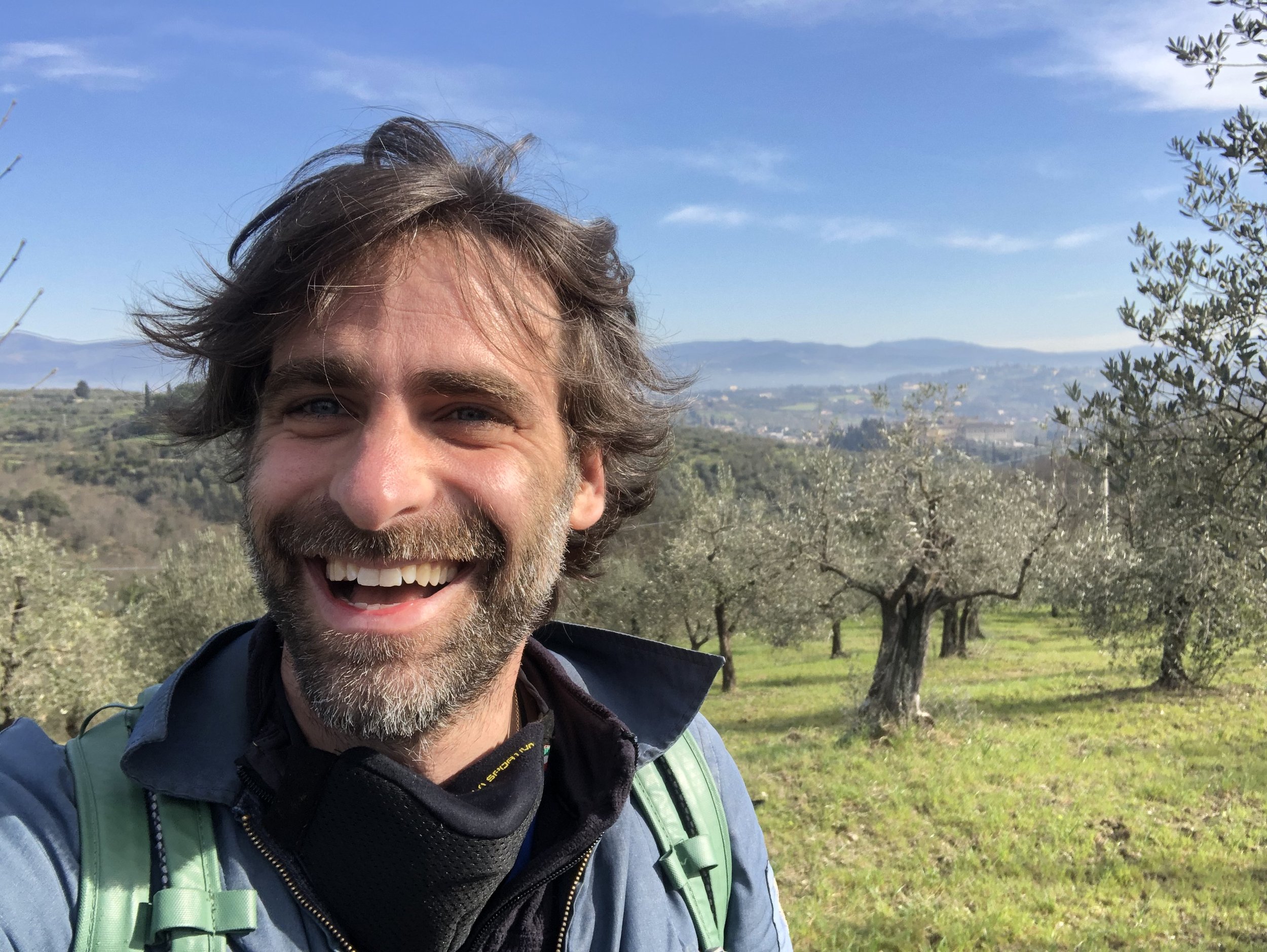

6. Hunt for the great statues all over the city
Statues in the Piazza della Signoria. Photo: Arnaud 25, CC BY-SA 3.0, via Wikimedia Commons
Much of the statuary that once adorned the Duomo has been moved out to the nearby Museo dell’Opera, where treasures include a Pieta by Michelangelo and the original doors that Ghiberti crafted for the baptistery.
The nearby Bargello was the city’s medieval police headquarters and prison, where the corpses of the condemned were hung from the tower windows. Today the cells and torture chambers are filled with some of the city’s finest examples of Renaissance statues, and the Bargello is to statuary what the Uffizi is to painting. Michelangelo makes an appearance with a playful Bacchus, but pride of place belongs to Donatello, whose boyish David and other works made him the star of 15th century Florentine art.
The city’s other great showplace for statuary is Piazza della Signoria, the center of the city and an outdoor sculpture gallery where a copy of Michelangelo’s David is surrounded by Neptune, Perseus, and a phalanx of other legendary figures, rendered by the city’s finest sculptors.
7. Take the high road on the Vasari Corridor
The Ponte Vecchio, topped by the Vasari Corridor
Duke Cosimo I Medici wanted to avoid the hoi polloi (and potential assassins) on his commute between his offices in the Palazzo Vecchio and Uffizi and his home in the Palazzo Pitti. So he commissioned architect Giorgio Vasari to build a walkway high above the city streets and across the Arno atop the Ponte Vecchio.
Today the so-called Vasari Corridor, reopening in May 2024 after a years’ long renovation, is lined with a remarkable collection of self-portraits and comes with a view of the Arno through windows that Mussolini ordered to be cut out so Adolph Hitler could enjoy the outlook in private.
8. Visit the Spedale degli Innocenti, Florence’s finest building
The Spedale degli Innocenti, one of the world’s first orphanages opened in 1445 and over the next 500 years cared for an estimated 375,000 boys and girls. This charitable institution, funded by the city’s powerful silk guild, occupies Florence’s first and most beautiful Renaissance building, designed by Filippo Brunelleschi, creator of the city’s famous dome.
Handsome loggias line the façade and two interior courtyards (one for men, and one for women), and the façade is emblazoned with beautiful rondels depicting babies by master ceramicist Andre della Robbia. The most notable feature is a small window through which an infant could be deposited into a turnstile and, via a slide, drop into the “basin of abandonment.”
Exhibits detail how the little ones were cared for and educated, and some galleries are hung with the silk guild’s impressive art collection.
9. Do some shopping
A fruit and vegetable stand in the Mercato Centrale. Photo: Rufus46, CC BY-SA 3.0, via Wikimedia Commons
Via de’ Tornabuoni is hallowed ground for high fashion, lined with Gucci, Prada, Ferragamo and other chic designer shops. A walk through Mercato San Lorenzo is easier on the wallet, and you can pick up a new one here, too, along with belts, totes, and other practical gear.
If you’re feeling peckish, step into the adjoining Mercato Centrale, where stalls temptingly display cheeses, sweets, cold cuts, produce and much more, much of it packaged for a picnic or your trip home.
Mercato Nuovo, near the Ponte Vecchio, specializes in leather, though the “made in Italy” labels may be as bogus as the wares they emblazon. Overseeing all the haggling and buying is Il Porcellino, a bronze boar whose snout has been rubbed to a shiny sheen over the years.
10. Head to the Farmacia di Santa Maria Novella
The green room in the Farmacia di Santa Maria Novella. Photo: I, Sailko, CC BY-SA 3.0, via Wikimedia Commons
Back in the 13th century, monks in the monastery attached to the church of Santa Maria Novella began concocting ointments and salves from plants they grew in their cloister garden. Word got out, and by 1612 they were providing the city’s elite with salves and scents from their Officina Profumo-Farmaceutica di Santa Maria Novella, purported to be the world’s oldest operating pharmacy.
Their frescoed, vaulted Grand Sales Hall is stocked with soaps, scents, and other elixirs concocted over the centuries and guaranteed to make those who use them feel, and smell, like a duke or duchess.
11. Climb to the top of the Brunelleschi Dome
The dome of the Duomo is actually two domes, an inner shell that supports the outer dome. You’ll witness this engineering marvel up close on one of the most arduous and thrilling ascents in Florence, up a series of 463 step stairs between the two structures.
The climb comes with dizzying looks into the church far below and, from the lantern at the top, a view that extends far across the city rooftops to the hills beyond. Slots are limited, so reserve well in advance.
12. Explore the Pitti Palace and other former noble residences
The southern facade of the Pitti Palace. Photo: Yanko Malinov, CC BY-SA 4.0, via Wikimedia Commons. Cropped from original
Step back to the 14th century in the Palazzo Davanzati, the home of a noble family who enjoyed such comforts as their own well and toilet and frescoed bed chambers.
One of the Medici’s first Florentine residences was the elegant Palazzo Medici-Riccardi, built around a courtyard in a style that became the prototype of grander palaces to follow.
The grandest of these is the Pitti Palace, home to the city’s ruling families into the early 20th century. Now home to five museums, the palace rooms are stacked with art and the gilt and stucco that a succession of dukes and duchesses left behind.
13. Relax in the Boboli Gardens
One of the top spots in Florence to catch a breath of fresh air is the Giardino Boboli, behind the Pitti Palace. An oasis of lawns, groves of cypress, and shady, statue-lined walkways, this is a wonderful place to escape away to for a couple of hours of relaxing.
Two focal points are the Isolotto, a little islet in the middle of a pond-like basin ringed by fountains depicting sea goods and marine creatures, and the Grotto Grande, a manmade cave fitted out with stalactites, stalagmites, and other fanciful creations.
14. Head for the hills in nearby Fiesole
Views from the hills in Fiesole
When the somber streets of Florence start to close in on you, make a quick escape to airy Fiesole, an ancient town that despite its proximity to the Tuscan capital still feels like a pleasant hilltop Tuscan village.
The bus ride up green hillsides takes less than half an hour and at the end of the road are sweeping vistas over the valley below, cooling breezes, and even some Roman ruins.
15. Venture into wine country - Chianti and the Val d’Orcia
Vineyards in Chianti
Florence is at the edge of two of Italy’s most famous wine-growing regions. Plenty of organized tours will take you into the vineyards of the Chianti and Val d’Orcia, usually with winey visits, tastings, some stops in atmospheric villages, and lunch included.
The best way to set off on your own is by car, since public transportation options are fairly limited.
Chianti
One day trip takes you across the Chianti, one of the most beautiful regions in Tuscany, a hilly landscape of vineyards, olive groves, stands of forests, and pretty stone villages. The best, most scenery-filled road through the heart of the region is the SR222, also called the Chiantigiana.
Along the way are dozens of wineries, many in historic castles, where you can taste the Chiantis and Super Tuscans that put the region on the wine map. Siena, at the end of the road, is a beautiful city that is locked in the Middle Ages the same way Florence preserves the Renaissance. The drive back to Florence takes a little over an hour.
Val d’Orcia
Another scenic drive takes you through the Val d’Orcia, a landscape of hills carpeted with golden fields and vineyards and topped here and there with storybook villages. Along the way is Montalcino, a walled medieval town where the surrounding vineyards produce Brunello di Montalcino wines.
An atmospheric setting in which to introduce yourself (but not your designated driver) to Brunello and slightly less distinguished Rosso di Montalcino is the Enotecca la Fortessa, within the walls of Montalcino’s fortress. Nearby Pienza is a pretty little town laid out in the 15th century as an ideal Renaissance city.
Last stop is Montepulciano, another noted wine town that climbs a hillside and where dozens of enotecas and wine caves introduce you to Rosso di Montepulciano and Vino Nobile di Montepulciano. You can be back in Florence in an hour and a half.
16. Take a day trip to Pisa or Bologna
Pisa
With Florence’s excellent train connections, you can be in Pisa in less than an hour. First stop, of course, is the Leaning Tower and other monuments on the Campo dei Miracoli, but also take time to walk through this attractive medieval and Renaissance city on the banks of the River Arno and soak in the ambiance.
The most atmospheric quarter is around Piazza delle Vettovaglie, the medieval fish and vegetable market.
Bologna
By fast train, the trip from Florence to Bologna takes less than 40 minutes (given the speed and since most of the trip is through tunnels bored into the mountainsides, the experience is like riding the subway).
There’s a lot to like about this appealing city that’s not in Tuscany but in neighboring Emilia-Romagna. Just for starters, Bologna is Europe’s largest medieval enclave, home to the world’s oldest university, and famous for food, with an entire district, the Quadrilatero, filled with after shop after shop brimming with cheese, ham, and pastas.


More Tuscany travel info
For more advice on planning your trip to Florence, Tuscany, and Italy, have a look at some of our other guides and itineraries!
Florence
Tuscany
Italy









